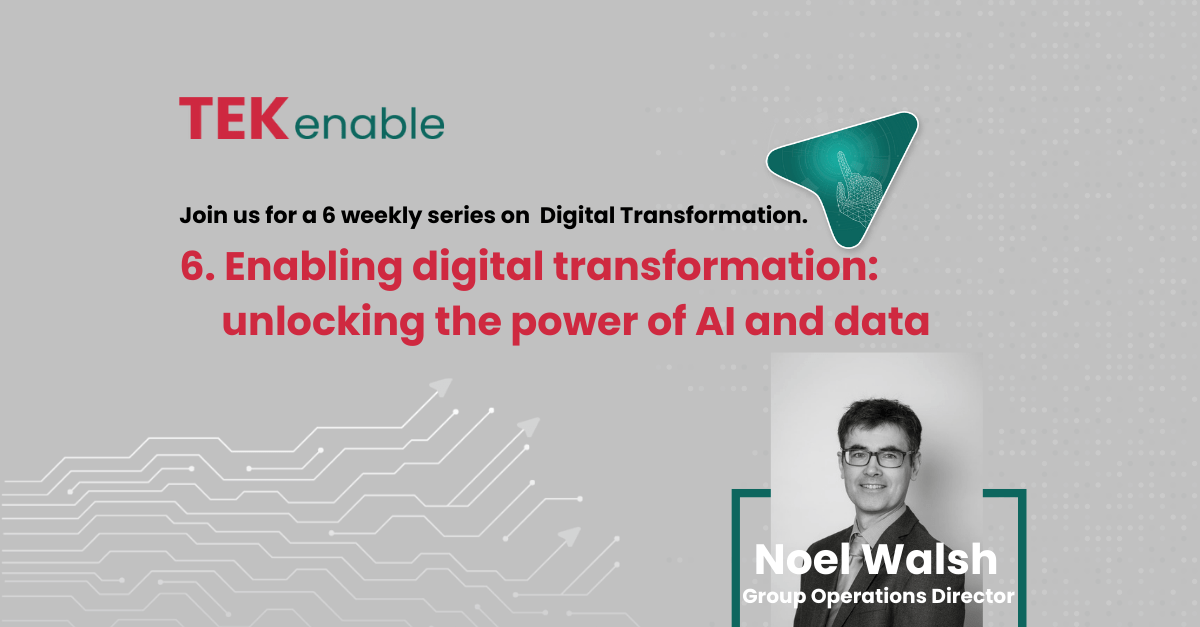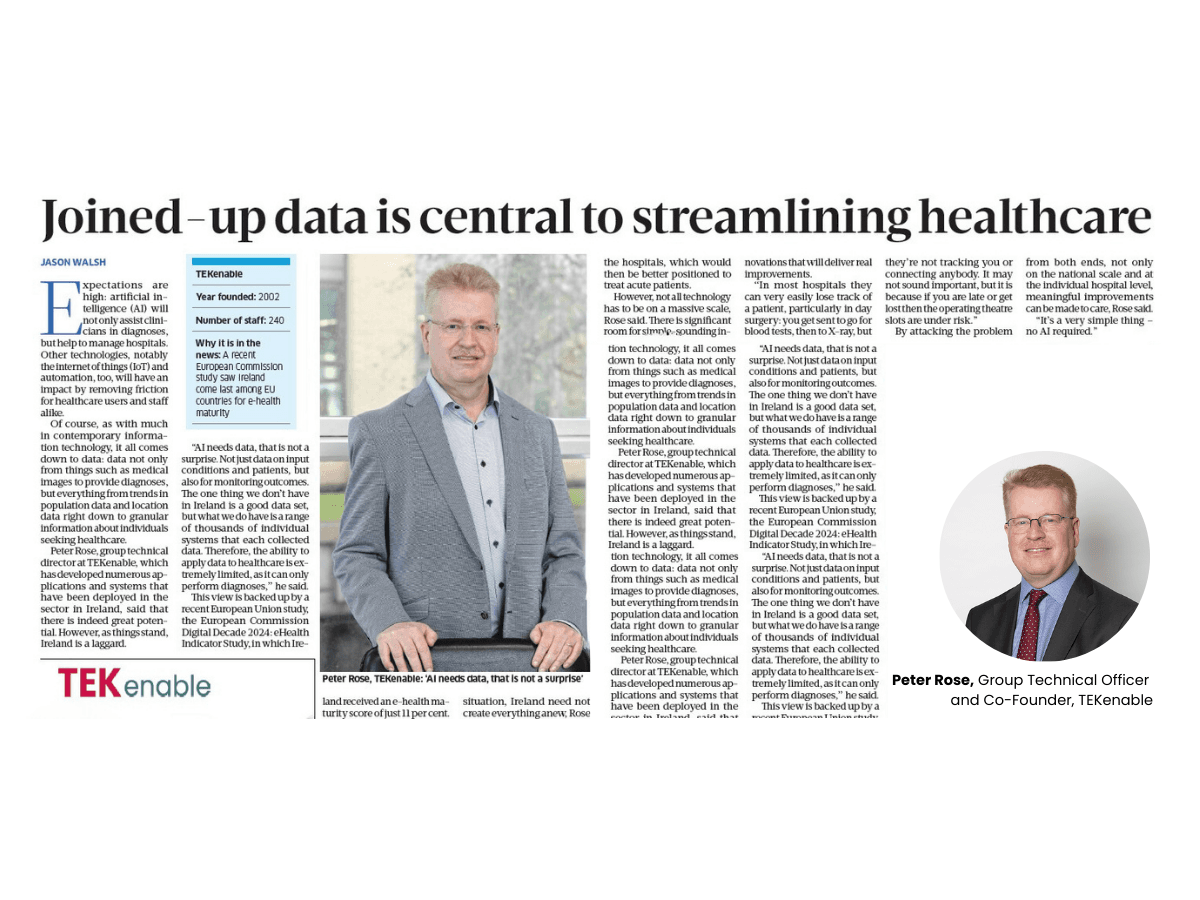AI and data has already transformed our world and the past twelve months have demonstrated that, with the rise of artificial intelligence, more change is to come.
In the age of digital transformation, data has emerged as a strategic asset. We’re told it day and daily: whether it is customer sentiment, the morass of unstructured data locked in e-mail exchanges or the humble accounting ledger, getting to grips with data is the key to keeping a business or organisation at the top of its game.
At the same time, technology has now arrived at a point where data can be interrogated in a myriad of ways rather than just awkwardly forced into a spreadsheet. So, the question arises: how can organisations harness the power of artificial intelligence (AI), data analytics and machine learning (ML)? And why should they? In addition, what are the challenges associated with data governance, privacy and security?
The power of knowledge
It is all very well to think something, and hunches can lead to great discoveries, but when it comes to making a business case for, well, anything, knowledge is called for. This knowledge can come in many forms, from experience to research, but increasingly important today is data.
But data is not, in and of itself, knowledge. In a sense, data is inert, simply sitting there waiting to be processed into knowledge. Indeed, this is why data lies at the core of digital transformation, acting as it does as the fuel that powers the AI-driven insights that lead to decision-making. In other words, by collecting, analysing and interpreting data, organisations can gain valuable insights, whether that is in relation to customer behaviour, market trends or operational efficiency.
From the accounts ledger to actuarial tables, data has driven decision-making in business from day one. What has changed, however, is not only the amount of data at our fingertips but also the kind of data we have and, indeed, our ability to transform it into knowledge. This is the true transformative potential of AI: by not only doing the adding up but also trawling hitherto inaccessible data, it allows the humans to do the thinking.
AI, in combination with advanced analytics and machine learning, has the potential to unlock hidden patterns and predict future outcomes, and even to automate decision-making processes such as provision of credit, for example. In turn, this enables operations to be optimised based on concrete facts and customer experiences personalised based on both previous use and perception of need. Clearly, this is a significant development, and one that takes us out of the twentieth century ‘Fordist’ production line producing endless amounts of identical goods and services.
With information comes responsibility
This newfound knowledge comes at a cost, however. While the potential of data and AI is vast, organisations are now faced with the need to navigate the challenges associated with data governance, privacy and security.
Data governance involves establishing policies, processes and controls to ensure the quality, integrity and availability of data. This is an important step in mitigating the risk of compliance breaches, of course, but it can also maximise the value of data assets.
And, apparently not needless to say, privacy and security are paramount in the digital era. Businesses and other organisations today collect and store vast amounts of customer data, and governments have not been slow to notice this. Whether in the form of the EU’s General Data Protection Regulation (GDPR) and its equivalents or that of industry-specific legislation governing sensitive sectors such as financial services or healthcare, the expectation today is that businesses will not abuse customer data and will do their utmost to keep it out of the hands of cyber criminals. Interestingly, both data analytics and AI themselves play an increasing role in detecting and preventing cyber attacks, but the lost important step is for organisations to realise that when they are charged with looking after customer data they have both legal and moral responsibilities to do so, not to mention the commercial imperative of the potential for reputational damage in the event of a leak or scandal.
Data for decisions
Leaving risk and compliance aside for the moment, though, it is clear that data-driven decision-making forms the foundation of any successful digital transformation initiative. By leveraging data and AI-powered insights, informed decisions that can be taken, thus driving business growth and competitive advantage.
Practically, this means that by means of data analytics, organisations can uncover patterns, trends and correlations that provide a deeper understanding of customer preferences, behaviours and needs. The result could be, for instance, personalised marketing or even pricing.
Insights can be broader, too, moving from the micro to the macro: AI-powered predictive analytics can support anticipation of possible future market trends and aid with the identification of new opportunities that allows businesses to stay ahead of the competition.
Data also has significant internal uses. By analysing data from sources as varied as enterprise resource planning (ERP) systems, customer relationship management (CRM) software and even troves of internal documents and e-mail exchanges, bottlenecks can be identified. In turn, this information can then be used to better optimise workflows, including by automating repetitive tasks, and so freeing up valuable resources.
Life on the edge
In short, organisations that effectively leverage data give themselves a distinct competitive edge. And those that don’t face the risk of falling behind. By harnessing the power of data and AI, organisations can gain a comprehensive understanding of their market, customers, and even competitors. In turn, this knowledge can be used to make strategic decisions, differentiate offerings and deliver increasingly personalised product and service offerings to customers.
At the same time, by transforming data into knowledge businesses can chart clearer paths of action and adapt quickly to changing market dynamics. Data-driven agility enables businesses to identify new market opportunities, evolve strategies and respond promptly to customer demands. In this way, data and AI are fundamental enablers of digital transformation, creating unprecedented opportunities for growth and innovation. But effectively harnessing the power of analytics and AI as part of a successful digital transformation journey requires the embrace of data as a strategic asset and the establishment of a culture that values data-driven decision-making. The risks need to be understood, too, such as compliance, security and governance, but the truth is that, in light of the ongoing revolution, standing still is the biggest risk of all.





